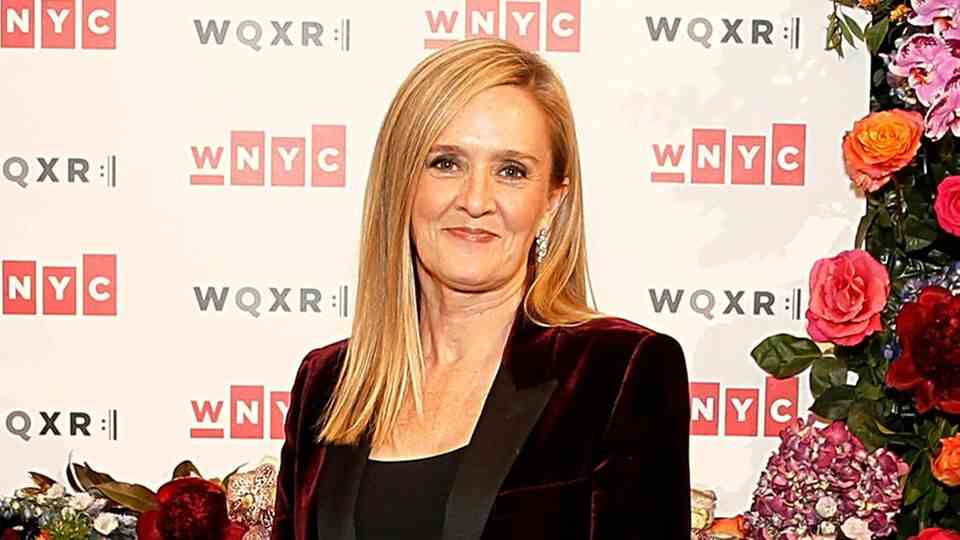United States
Trevor Noah and James Corden break up the uncertain future of late-night shows
Trevor Noah is one of the greats of American late night formats. But he will stop.
© BFA / Action Press
Late night shows are an institution in the United States. But what was a recipe for success for decades now tastes a bit salty. Several big names in the industry are giving up their shows. The entertainment industry is in transition. The format faces an uncertain future.
In the USA, late-night shows were an integral part of the screens for decades. Over there, at the other end of the Atlantic, they have already got a number of viewers enthusiastic about politics and the USA. When Jon Stewart left the “Daily Show” in 2015 after 16 years, many felt like losing a family member, an uncle who, contrary to the common stereotype of the bitter, somewhat shady man, provided good humor and stimulating analysis .
In Trevor Noah, Comedy Central found a smart, smart, and valued successor. But his time is coming to an end. Trevor Noah will be leaving the Daily Show next year. And he’s not the only late night host to leave. Jack of all trades James Corden will give up his celebrity dope and feel-good format “Late Late Show” next year. If Corden leaves, the show will not be a copy of the current one, according to the “Guardian” manager at CBS.

James Corden is not only the host of the “Late Late Show”, but also an actor. Here he is at the premiere of the series “Mammals” in early November.
© MediaPunch / Action Press
Other formats have disappeared entirely. TBS canceled “Full Frontal with Samantha Bee” this summer. The former correspondent of the “Daily Show” was one of the few women in the male domain Late Night. This is not about isolated cases. This is about the upheaval of an entire industry. And possibly the end of an era.
The successful late-night show model is crumbling in the USA
The economic situation of the broadcasters has deteriorated. Advertising revenue is declining significantly. Streaming providers such as Netflix or Amazon Prime are major competitors for linear television. The late-night show model that has been so successful for decades is crumbling – even if the production costs are comparatively low.
But the viewers in front of the television are becoming fewer. An episode of “Full Frontal with Samantha Bee” was watched by four million viewers in 2018 and 2019. In 2021 there were still 2.9 million. Not enough for TBS. Even with “Conan” with talk show veteran Conan O’Brien, the numbers had recently been below expectations. The show ran one last time in the summer of 2021.

Samantha Bee has made a career as a woman on the male-dominated Late Night Talk Show. However, her show “Full Frontal with Samantha Bee” has not been running since the summer of 2022.
© Dominik Bindl / Getty Images
As the “New York Times” reports, NBC is considering changing the broadcast date of the iconic “Tonight Show”, hosted by Jimmy Fallon. It would be the first time in its 70-year history that the show would start as early as 10:30 p.m. Traditions are faltering. Because viewing habits have also changed.
Some content seems outdated today
Viewers are used to having content available at all times. A fixed TV program, on the other hand, specifies times. On the other hand, the success of a live streaming portal like Twitch shows that even young people have a need to see and experience things together.
The upheaval late-night shows are going through doesn’t just have to do with their format. It’s also because of their content. In times when every celebrity and non-celebrity shares their inner life, their appearances and new releases on Instagram and Tiktok, the perfectly staged guest appearances in the late-night shows seem almost out of date.
“Bold and Bold”, “Ruby”, “Four Walls Plus”
ZDFneo shows three new comedy series. But only one of them is really good
What’s refreshing and entertaining about shows like Trevor Noah and Stephen Colbert’s is the mix of star-studded lines, dialogue and monologue, political comedy and analysis. As far as the political part is concerned, one topic dominated for years: Trump. The rowdy ex-president and his team of questionable advisors and relatives provided so many templates for jokes and at such a pace that all political show formats understandably shot into it. With the risk of becoming repetitive. Then Trump was voted out and his political actors disappeared from the stage for the time being. “Suddenly there isn’t that much anymore,” media historian Robert Thompson of Syracuse University told the Guardian.
If you look at the political and social situation in the USA and worldwide, however, there seems to be enough material for political comedy. Only the lapses and missteps of politicians are spread almost in real time via Twitter and Co. “The idea of a time window has become old-fashioned,” says Thompson. That damaged late-night TV and its entertaining classification of daily events. But he also says in the “Guardian” that we shouldn’t see this as a house of cards that is collapsing.
Some famous late-night show hosts have renewed
For example, there are ideas to translate late-night shows into streaming formats. The “New York Times” writes that the host behind the desk will not disappear immediately and lists prominent representatives who have extended their contract: Jimmy Kimmel until 2026. Jimmy Fallon until the late 2020s. And Stephen Colbert, the most successful of them all in terms of viewership, see you next year. Late-night shows remain, but they are likely to face one or the other reorientation.
Sources: The New York Times, The Guardians, Yahoo, mirror


